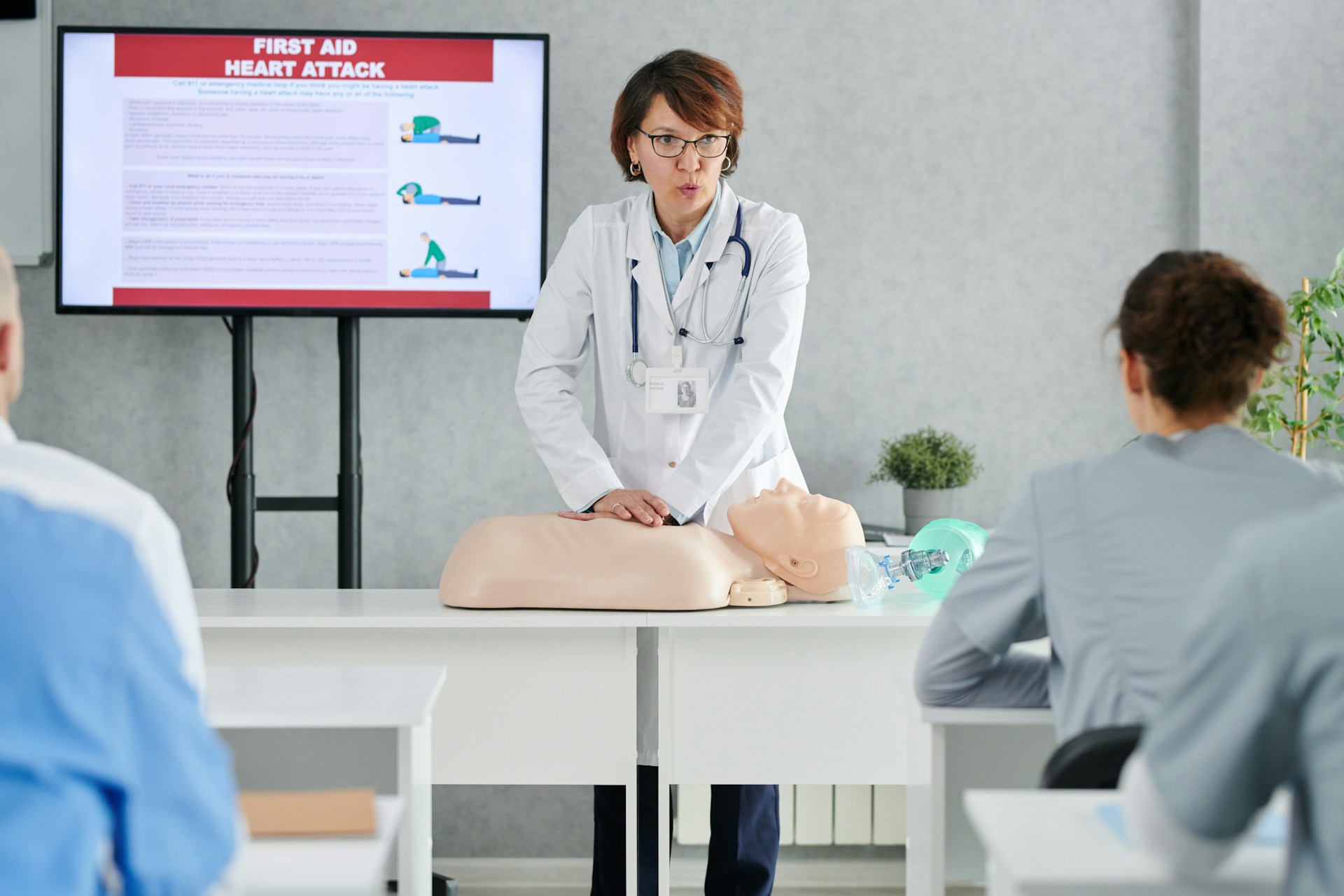Why Virtual and Blended Training Is the New Standard in Life Support Courses
Life support training has always been essential for healthcare professionals, first responders, and even non-clinical staff who may find themselves in emergencies. However, the way these courses are delivered has undergone significant changes. With digital technology becoming central to education and the growing demand for flexibility in professional development, virtual and blended training models are quickly establishing themselves as the new standard in life support courses.
The Traditional Approach to Life Support Training
Traditionally, courses such as Basic Life Support (BLS), Immediate Life Support (ILS), and Advanced Life Support (ALS) were delivered entirely in-person settings. Participants were required to attend classroom-based sessions, practising techniques such as cardiopulmonary resuscitation (CPR) and airway management under the supervision of an instructor.
While this hands-on approach remains vital for specific skills, it has its limitations. The fixed schedules, travel requirements, and lengthy time commitments often presented challenges for busy professionals, especially those working shifts in healthcare environments.
The Rise of Virtual and Blended Models
The pandemic accelerated the adoption of digital learning across almost every sector, and healthcare training was no exception. Life support courses adapted quickly by shifting much of the theory online, while retaining essential face-to-face practical sessions. This evolution has led to two dominant approaches:
- Virtual Training: Fully online delivery of theoretical content through interactive modules, webinars, and assessments.
- Blended Training: A combination of online learning for theory and shorter in-person sessions for practical skills and assessments.
This blended model is proving particularly popular, as it strikes a balance between convenience and hands-on competence.
Why Flexible Learning Matters
The need for greater flexibility drives the shift towards virtual and blended learning. Healthcare professionals face increasing pressures, including staff shortages, long hours, and unpredictable rosters. Taking an entire day, or even several days, out of work to attend classroom-based training is not always practical.
By allowing participants to complete theoretical components online at their own pace, blended training minimises disruption. Learners can log in during quieter periods, revise modules as needed and attend in-person sessions only when required to demonstrate skills. This makes training more accessible, efficient, and sustainable.
Benefits of Virtual and Blended Life Support Training
- Accessibility
Online modules can be accessed anywhere with an internet connection, widening participation for learners in rural areas or those working irregular hours.
- Consistency of Learning
Digital platforms ensure that all participants receive the same high-quality content, reducing variation in teaching styles across instructors.
- Improved Retention
Studies suggest that revisiting online modules enhances retention of theoretical knowledge compared with one-off classroom lectures.
- Time and Cost Savings
Blended learning reduces travel time, venue costs, and time away from clinical duties, delivering savings for both individuals and organisations.
- Scalability
Training providers can reach larger groups without being limited by classroom size, making it easier to keep entire teams up to date.
Addressing the Practical Component
One of the biggest concerns about online life support training is whether it adequately prepares learners for real-life emergencies. After all, CPR, defibrillator use, and airway management require physical practice.
Blended training addresses this by reserving in-person sessions for the assessment of practical skills. Typically, learners complete their theory online, then attend a shorter, focused face-to-face workshop where they demonstrate competence on manikins under the supervision of certified instructors. This approach ensures that practical standards are upheld while reducing unnecessary classroom time.
Meeting Regulatory Standards
Professional bodies, such as the Resuscitation Council UK and its international equivalents, have increasingly endorsed blended learning approaches. Many certification programmes now explicitly allow theoretical components to be delivered online, provided practical skills are tested in person.
This recognition has been vital in making virtual and blended life support training credible and widely accepted. Employers and regulators alike understand that the approach maintains training standards while adapting to modern realities.
Growing Demand Across Sectors
While life support training is most associated with healthcare, demand for flexible learning is expanding across multiple sectors:
- Corporate Environments: Businesses are investing in first aid and life support training for staff, particularly in industries where health and safety risks are high.
- Education: Schools and universities are ensuring staff and students receive training in CPR and basic life support.
- Community organisations, charities, sports clubs, and local groups are seeking cost-effective ways to train volunteers without disrupting their schedules.
In each of these settings, virtual and blended training offers a scalable and adaptable solution.
The Future of Life Support Training
The trend towards digital learning in healthcare training is unlikely to reverse. As technology improves, interactive simulations, virtual reality, and AI-driven assessment tools will further enhance online life support training. These innovations promise even more engaging, realistic, and compelling learning experiences.
Blended training will remain central, as it combines the strengths of both digital flexibility and hands-on practice. In the long run, organisations that embrace these models will be better positioned to keep their teams trained, compliant, and confident in responding to emergencies.
